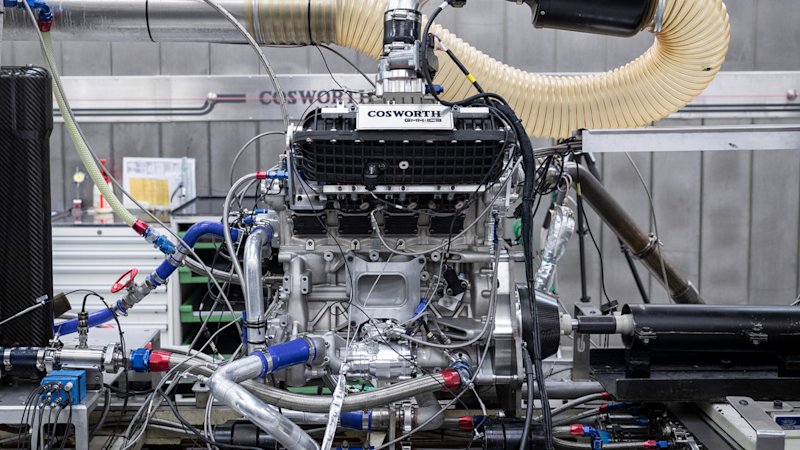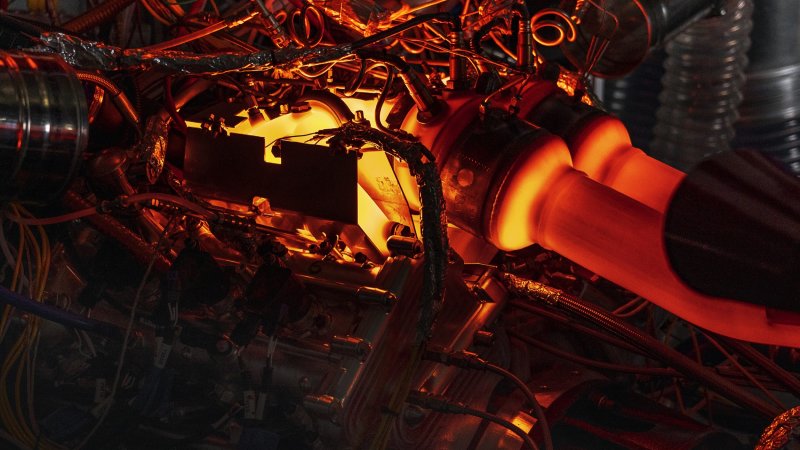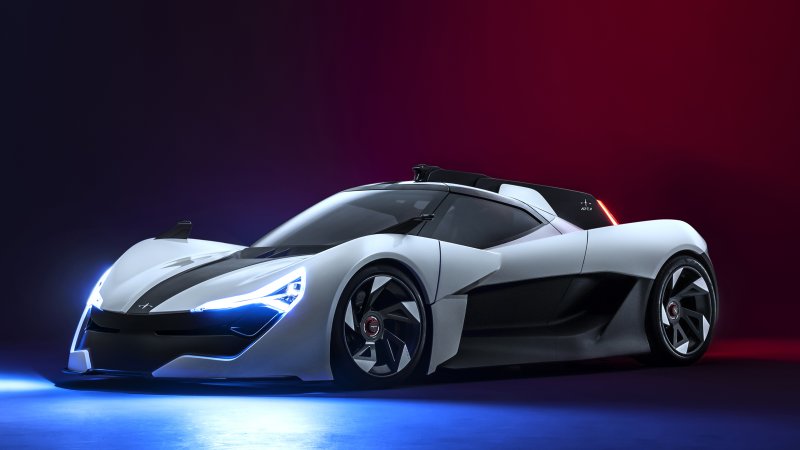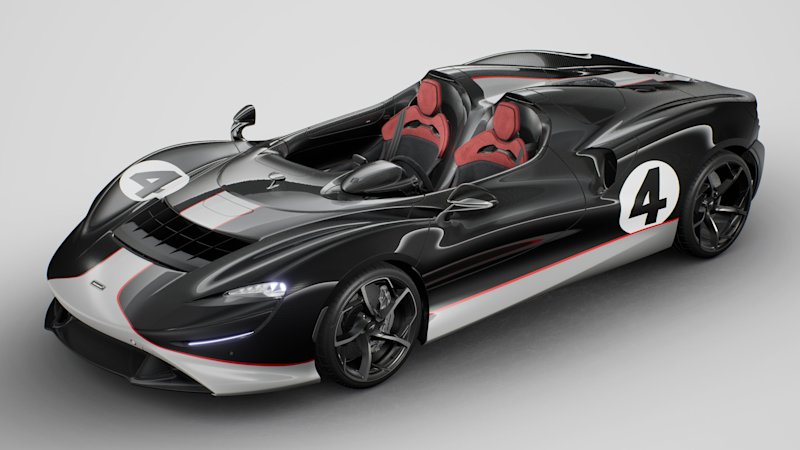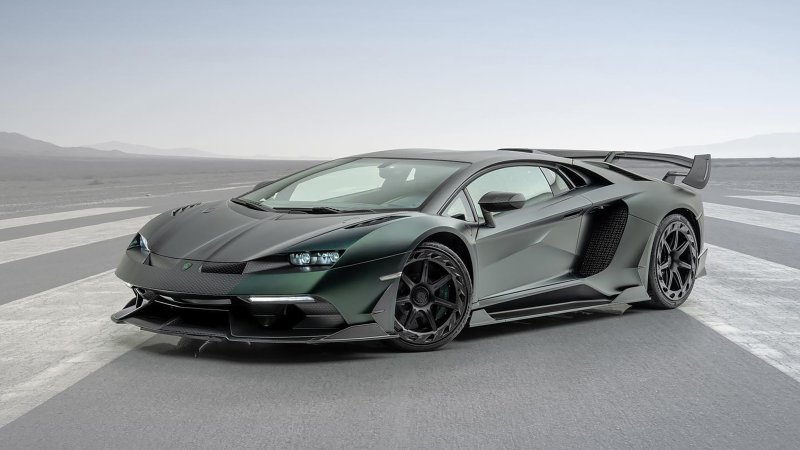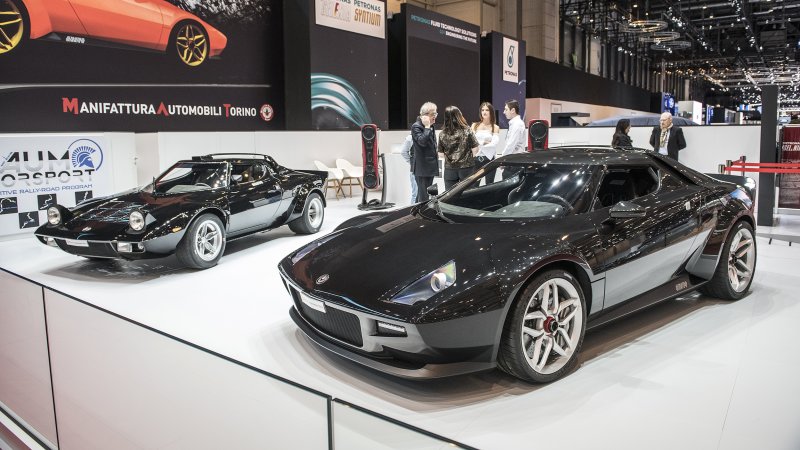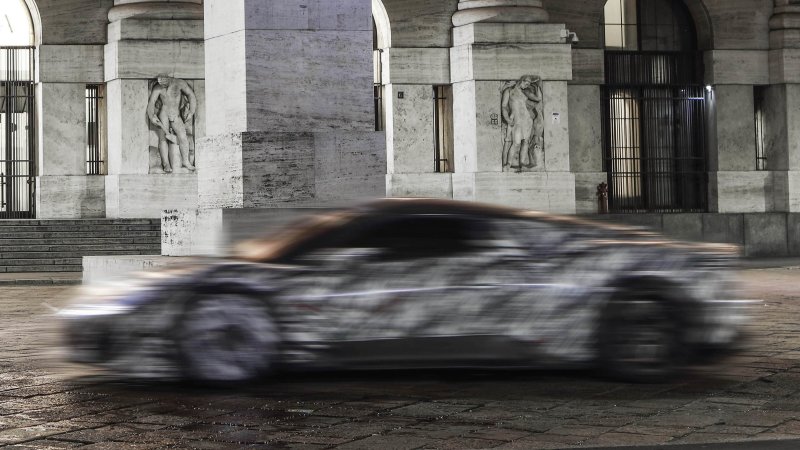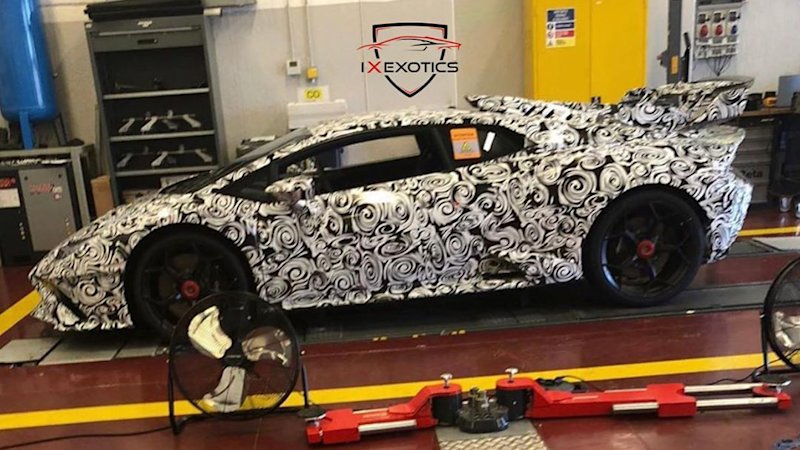Gordon Murray’s T.50 gets a soundcheck and a website
Gordon Murray Automotive isn’t slated to begin building the T.50 supercar until late next year, with deliveries scheduled for early 2022. Thankfully for us, the next step on the march to that goal is a website and a soundcheck of a portion of the 3.9-liter V12 which will power the three-seater coupe (watch that video here). We say “a portion” because Cosworth — the engineering firm developing the mill — put just three of the 12 cylinders on the dyno to verify emissions output and ensure the components can handle 12,100 rpm, said to be 300 rpm short of a 12,400-rpm “hard limit” redline. That figure is 1,400 rpm beyond the north wall of the 6.5-liter V12 Cosworth built to propel the Aston Martin Valkyrie. Murray told TopGear that the air pulses sucked into the ram-air intake above the cabin will result in magnificent sound. The English engineering legend tuned the thickness of the roof panel on the McLaren F1 to enhance the engine sound, and he’s done the same thing on the T.50. Based on the short snippet of the dyno run, the free-breathing V12 will excite blood and bone.
Output checks in at 650 horsepower and 332 pound-feet of torque, meaning ten hoses more than the 2021 Porsche 911 Turbo S but 184 lb-ft less. Unlike just about every other supercar out there today, the T.50 will weigh no more than 2,161 pounds, a stunning spec that’s 1,475 pounds less than the Turbo S, 899 pounds less than the Lotus Evora 400 Lightweight, 180 pounds less than an entry-level Mazda MX-5 Miata Sport. The V12 will utilize two engine maps, one that loads up torque at the bottom of the rev range for potting about town, dropping the redline to about 9,500 rpm and horsepower to roughly 600, the other unlocking every rev and joule. A 48-volt mild hybrid system powers the 15.7-inch rear fan and active aero panels, and employs a small electric motor to add 30 ponies in certain aero configurations. Power in the 100 units of the T.50 road car is sent to the rear wheels through a six-speed manual with an exposed linkage; the 25 units of the T.50 track-only car will use paddle shifters.
The coupe serves up five aerodynamic maps, two automatic and three driver selectable. Auto mode moves the under-floor and diffuser panels and active rear spoilers automatically as needed. Braking mode — as on a Bugatti Chiron or any McLaren — stands up the rear spoilers and powers the fan to suck air from under the car, improving downforce and therefore traction. Selectable High Downforce mode is made for the track and wet roads, boosting downforce by 30% over Auto mode. Streamline goes the opposite direction, closing aero inlets to reduce drag by 10% compared to Auto mode, and it “activates the fan at high speeds to extend the trailing wake of air behind the car, in effect creating a virtual long-tail.” VMAX mode starts with Streamline and kicks in extra boost from the 48-volt system to get to about 680 hp. Murray said the T.50 tops out somewhere around 220 miles per hour.
The carbon-intense supercar has moved into wind tunnel testing in Silverstone, using the Racing Point F1 team facility. At the same time, Gordon Murray Automotive is finishing its customer experience and service center in Dunsfold, England next to the factory that will build the T.50. Have a listen to the engine and imagine what’s to come for what it’s designer calls the “last and the greatest analog supercar ever built.” We also recommend checking out TG‘s piece on the car, where Murray admits that driving dynamics have been benchmarked against the Alpine A110, power steering will only work at low speed and in parking lots, the V12 flips from idle to 12,000 rpm in 0.3 seconds, and the rear tires are just 295-section (911 Turbo S rubber is 315-section out back).
Related Video:

